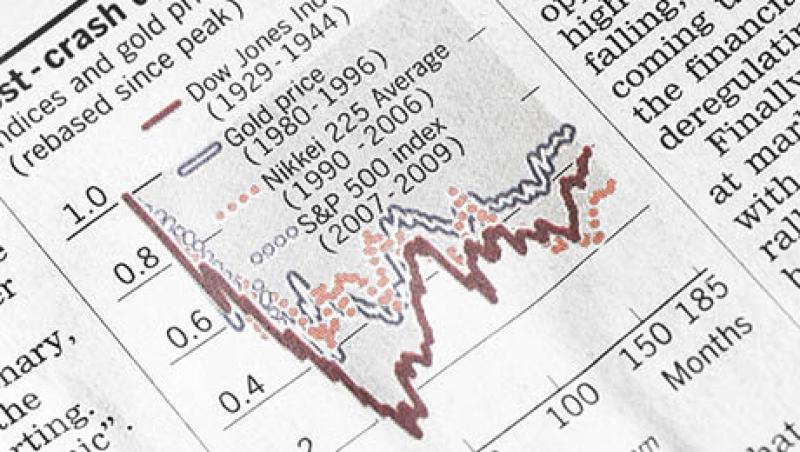As index investing soared in popularity in the early 1990s, the so-called index change effect emerged as an opportunity to take advantage of the jump in a stock’s price that occurred after an index announced that it was adding the stock to its roster. But market behavior has evolved considerably over the past 25 years. What was once a source of found money has become more complicated.
Each year major stock indexes like the S&P 500 must incorporate new companies to replace the ones that have dropped off the index or were gobbled up by mergers and acquisitions. In the 1990s data showed that when a stock’s inclusion was initially announced, its price surged as index funds rushed to purchase it. Stocks would then trade sideways until the effective date of the inclusion, before spiking again in the lead-up to that day’s close. After that, with the index funds having satiated their demand, the price tended to revert down to near where the stock was trading before the effective date.
To capture that initial price increase, investors would need to be holding the stock before the announcement. This dynamic meant that index funds — which generally only hold stocks already in or at least scheduled to be in the index — really had no way of capturing the first part of index change effect. They could, however, capture the second part. By simply purchasing the stock after the announcement but before the effective date, they could pick up the stock at a discount relative to its first-day closing price. Even after the price reverted to its pre–effective date levels, that discount translated into higher returns compared with what was offered by other funds that crowded into the first-day close.
Demand from index funds is more robust than ever — if anything, there is even greater incentive for companies to be included in an index. And that’s part of the problem. As interest in index inclusions grew over the years, hedge funds and other types of active managers began front-running the index change effect and essentially arbitraged it away. These investors would anticipate which stocks were about to be included in an index and arrange to purchase it either before or right on the day of the announcement. As a result, by the time the announcement was made, there were a huge number of market participants holding the stock ready to sell and meet the index funds’ demand. With so much supply in the market, the subsequent part of the effect — when a second wave of index buyers had pushed prices higher into the effective date close — became watered down and eventually disappeared altogether.
Indeed, research from Bank of America Merrill Lynch, Instinet and other sources has shown that, on average over the past five years, stock prices for companies added to the S&P 500 index have actually fallen from the morning after the announcement to the effective date of the index change. What was once a two-part bounce has been reduced to a single bump that can only be captured primarily by those able to speculate on the additions and get in their orders before the announcement-day close.
It’s true: Not all indexes and index changes behave the same way. The Russell reconstitutions — when Russell Investments rebalances its entire lineup of indexes each year and which at one time closely mirrored the patterns in the S&P — have become a mixed bag, with some additions moving the “wrong way” from what higher index demand would suggest and some moving more in line with what was seen in the 1990s. MSCI index changes often move more in line with indexer demand, perhaps because higher liquidity and information constraints on international portfolios tend to hold down the number of hedge funds and other index arbitrage players operating in those markets.
Some recent media reports have suggested that the failure of index funds to capture the index change effect is somehow the fault of the index funds, a result of their blindly following the index rules to exactly mirror changes in the benchmark the moment they become official. We at State Street Global Advisors think this portrayal is not only unfair but also based on outdated and — at this point — misleading data.
The reports cite recent research from London-based hedge fund firm Winton Capital Management that compares passive managers purchasing newly included stocks at the market close on the effective date with active managers buying the stock at close on the day of the announcement, which is generally not possible without speculating on the inclusion. The study showed that passive funds tracking the S&P 500 index are losing nearly 20 basis points, compared with the active funds front-running the index changes.
But the Winton research is based on S&P index data from 1990 to 2014. A good chunk of the index change effect driving price swings during the first decade of that period seems not to exist, for active or passive managers. Moreover, the prescription implied by the reports — that index funds would be better off buying the stock right after the announcement, instead of waiting for the effective date — is exactly the wrong approach for today’s environment.
As managers that stake their risk-adjusted returns on index tracking, index funds have no way of front-running a stock the way a hedge fund or other active arbitrageur can. That said, there are some things they can do.
At SSgA, we’ve done our own analysis showing that over the past five years the best way for an index fund to recapture some profits from an index addition would be not to buy the stock right after the announcement but to wait until after most of the speculation-driven inventory has sold off. Simply by delaying purchase from the morning after the announcement until the effective date, our analysis shows, an investor would have picked up 5 basis points in returns.
We believe indexing is not a blinkered strategy in which managers always time their purchases exactly to changes in the index. Rather, we are well aware of the impact of index changes on a portfolio, and we are constantly weighing the trade-offs between minimizing tracking error and minimizing trading costs in light of all the challenges and opportunities presented by today’s markets.
Lynn Blake is CIO of global equity beta solutions, and Karl Schneider is senior portfolio manager; both at State Street Global Advisors in Boston.
See SSgA’s disclaimer.
Get more on indexing.






